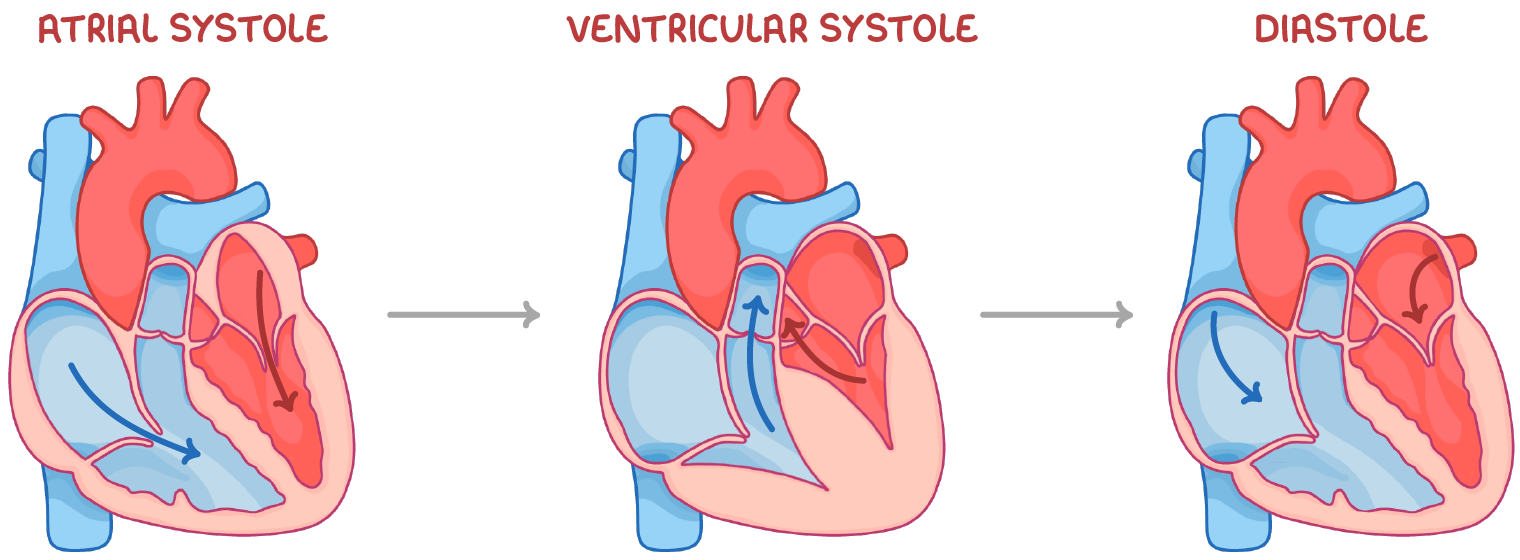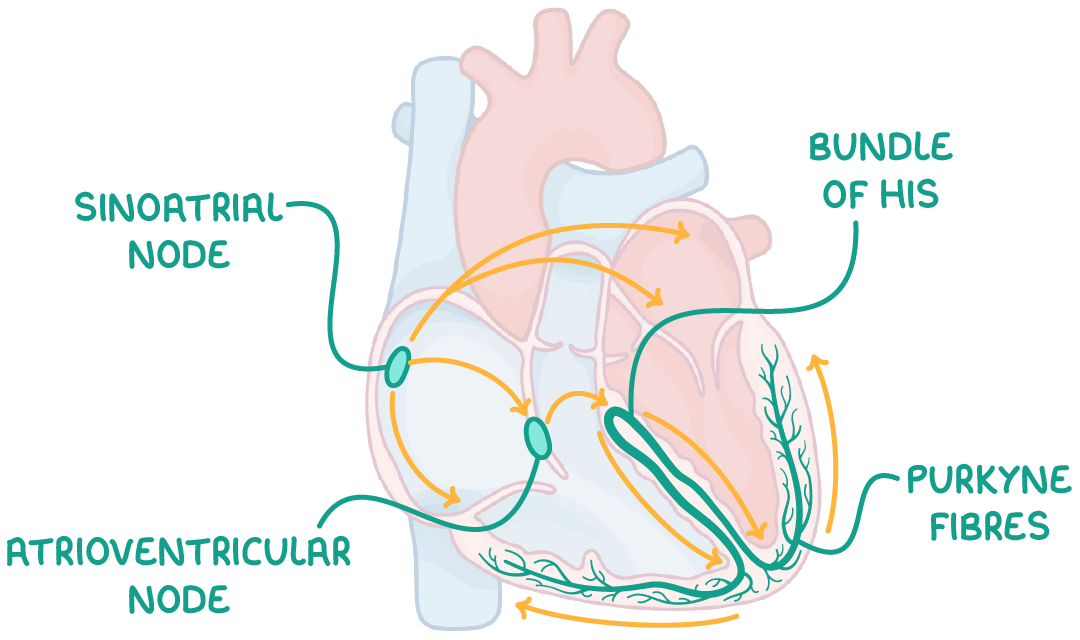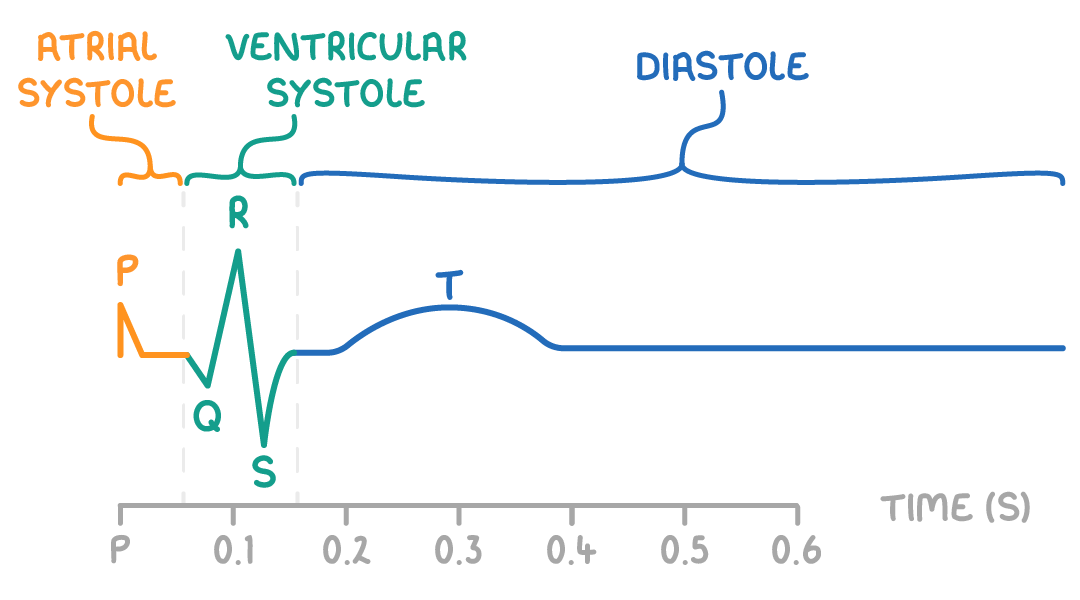Cardiac Cycle
This lesson covers:
- The stages of the cardiac cycle
- How the heartbeat is controlled
- How an electrocardiogram monitors heart function
Stages of the cardiac cycle
The cardiac cycle is the sequence of contraction and relaxation of the cardiac muscle in the walls of the heart. It has three main stages: atrial systole, ventricular systole, and diastole.

Stage 1 - Atrial systole
- The ventricles relax, and the atria contract.
- This increases the atrial pressure.
- The atrioventricular valves open.
- Blood flows into the ventricles.
Stage 2 - Ventricular systole
- The ventricles contract, and the atria relax.
- The ventricular pressure increases.
- The semi-lunar valves open, and the atrioventricular valves close.
- Blood flows into the arteries.
Stage 3 - Diastole
- The ventricles and atria relax.
- The semi-lunar valves close.
- Blood flows passively into the atria.
Cardiac output
Cardiac output is the volume of blood pumped by one ventricle of the heart in one minute.
We can calculate it as follows:
- Measure the heart rate - This is the number of heart beats per minute.
- Measure the stroke volume - This is the volume of blood that is pumped out of the left ventricle during ventricular systole.
- Calculate the cardiac output - Cardiac output = heart rate× stroke volume
Controlling the heartbeat
Cardiac muscle is myogenic, which means that the contraction of cardiac muscle initiates within the heart itself. The basic rhythm of the heart is maintained by a wave of electrical excitation.

This wave travels through the following structures in this order:
- Sinoatrial node (SAN) - This initiates the heartbeat by stimulating the atria to contract. A layer of collagen fibres prevents direct electrical flow from the atria to the ventricles.
- Atrioventricular node (AVN) - This picks up the electrical activity from the SAN and imposes a slight delay.
- Bundle of His - This receives electrical activity from the AVN and conducts the wave of excitation to the heart's apex (base).
- Purkyne fibres - These branch off the bundle of His, causing the right and left ventricles to contract from the bottom upwards.
Electrocardiograms
Electrocardiograms (ECGs) record the heart's electrical activity using electrodes.

An ECG shows the various stages of the cardiac cycle:
- P wave - Atrial systole
- QRS - Ventricular systole
- T wave - Diastole
ECGs help diagnose abnormalities like:
- Tachycardia - This is an abnormally rapid heart rate.
- Bradycardia - This is an abnormally slow heart rate.
- Ectopic heartbeats - This is extra heartbeats out of the normal rhythm.
- Atrial fibrillation - This is the abnormally rapid and ineffective contraction of the atria.